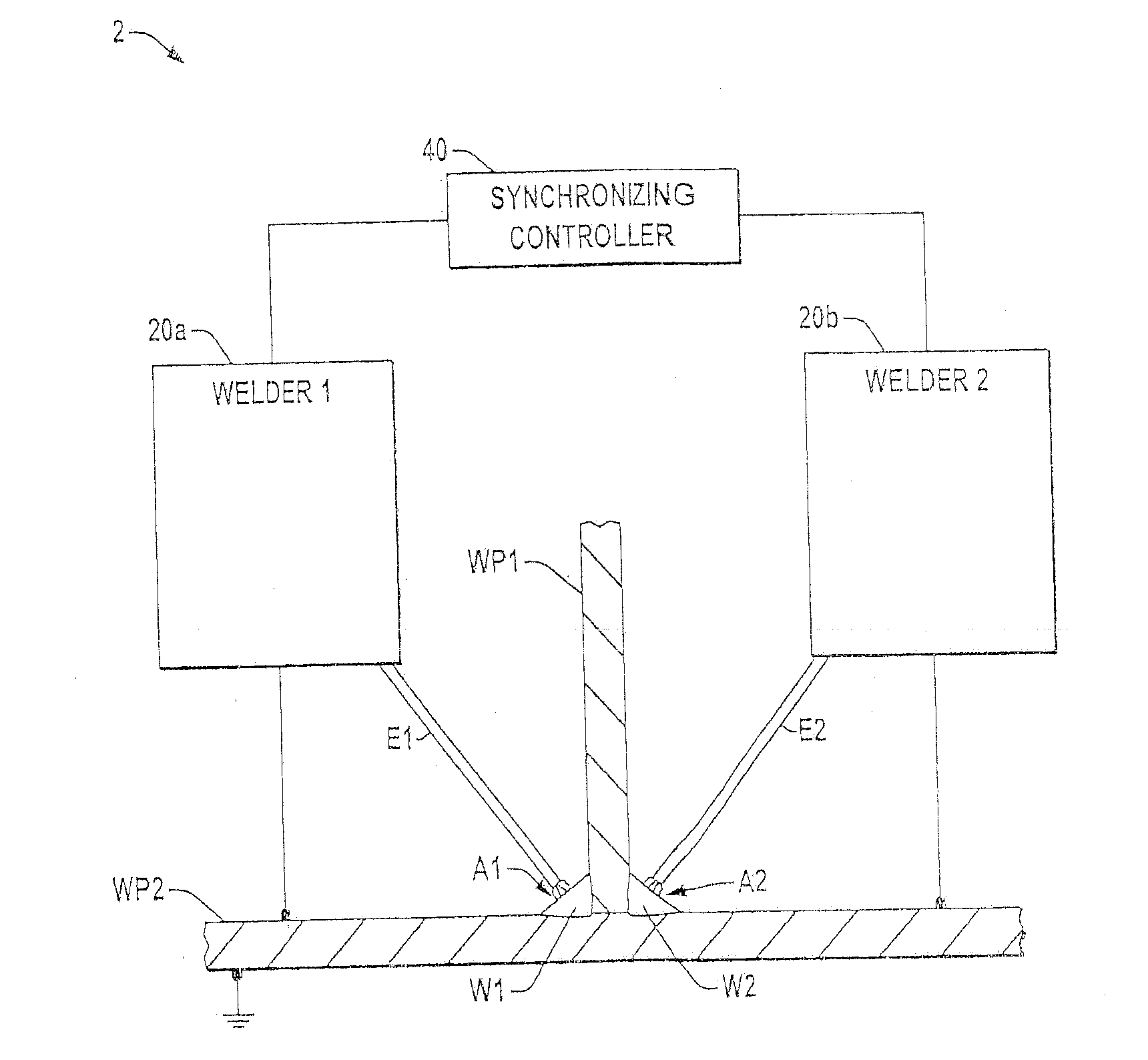Welding methods and systems
a welding method and system technology, applied in the field of arc welding, can solve the problems of adverse effects of welding techniques, adverse effects of welding on the other side, and puddles on the other side, and achieve the effects of facilitating uniform controllable weld penetration, shape and size, and facilitating the creation of consistent high-quality welds
- Summary
- Abstract
- Description
- Claims
- Application Information
AI Technical Summary
Benefits of technology
Problems solved by technology
Method used
Image
Examples
Embodiment Construction
[0046]Referring now to the figures, several embodiments or implementations of the present invention are hereinafter described in conjunction with the drawings, wherein like reference numerals are used to refer to like elements throughout and wherein the illustrated structures are not necessarily drawn to scale. Although several preferred embodiments are illustrated and described hereinafter in the context of root pass dual fillet welding using two welding electrodes positioned on opposite sides of a welded work piece, other embodiments are possible in which two or more pairs of opposing welding electrodes are used in creating a dual fillet weld with one or more passes, with the waveforms applied to the electrodes and / or the work points used by opposing welding machines of a given pair being operated in a synchronized manner to provide controlled waveform and / or work point phase angles during concurrent creation of two fillet welds. Further embodiments are also contemplated in which ...
PUM
| Property | Measurement | Unit |
|---|---|---|
| angle | aaaaa | aaaaa |
| angle | aaaaa | aaaaa |
| phase angle | aaaaa | aaaaa |
Abstract
Description
Claims
Application Information
 Login to View More
Login to View More - R&D
- Intellectual Property
- Life Sciences
- Materials
- Tech Scout
- Unparalleled Data Quality
- Higher Quality Content
- 60% Fewer Hallucinations
Browse by: Latest US Patents, China's latest patents, Technical Efficacy Thesaurus, Application Domain, Technology Topic, Popular Technical Reports.
© 2025 PatSnap. All rights reserved.Legal|Privacy policy|Modern Slavery Act Transparency Statement|Sitemap|About US| Contact US: help@patsnap.com



